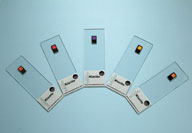A research team at the University of Southampton has developed a technique for using Raman scattering an optical phenomenon for the rapid detection and identification of minute quantities of molecules in a sample of liquid. Gloucester Hospitals NHS Foundation Trust is conducting trials of the technique as a tool for making differential diagnosis of conjunctivitis from tear fluid.

When monochromatic light, such as from a laser, is focused on a sample, some light is transmitted, some absorbed and some scattered. Most of the scattered light has the same wavelength as the incident light this is known as Rayleigh scattering. A tiny fraction around one in 107 photons is scattered at different wavelengths, characteristic of the molecules contained in the sample.
Register now to continue reading
Thank you for visiting Optician Online. Register now to access up to 10 news and opinion articles a month.
Register
Already have an account? Sign in here


